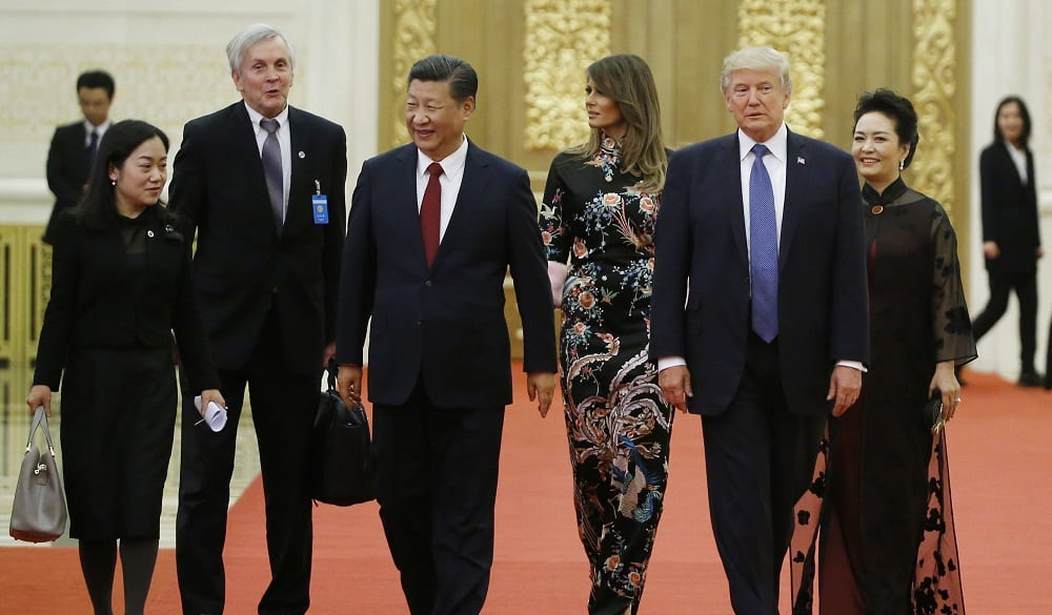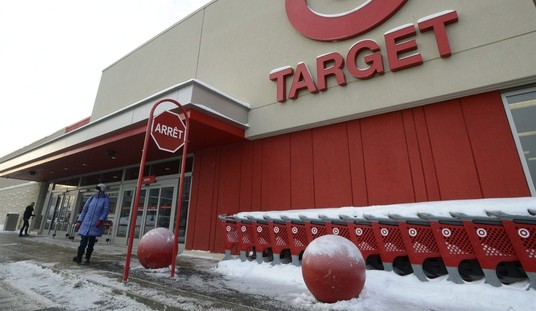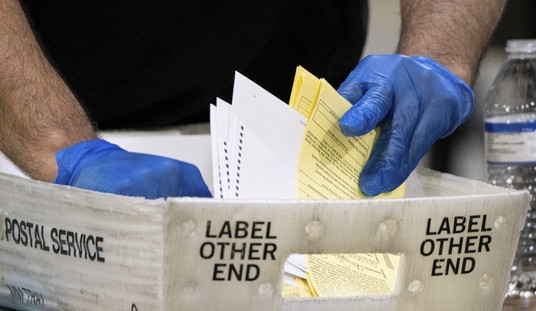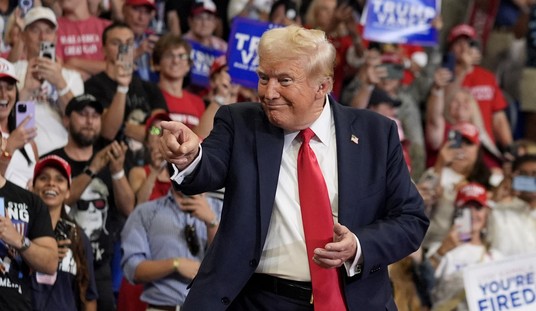A bucket of yelllow soybeans is shown as a truck rolls by Deerfield Farms Service on Thursday, April 5, 2018, at the facility in Volant, Pa. After the Trump administration unveiled plans to impose tariffs on $50 billion in Chinese imports, China lashed back, matching the American tariffs with plans to tax $50 billion of U.S. products, including soybeans, corn and wheat. (AP Photo/Keith Srakocic)
There was bipartisan frustration with Trump following some remarks he gave at a rally in Toledo, Ohio Thursday in which he referred to the China trade deal — set to be signed next week if all goes well — as a “big, beautiful monster” that is supposed to secure $200 billion in Chinese purchasing of American goods over two years. Trump said the windfall for American farmers would be in the $50 billion range, leading to criticism that he was engaging in a “bailout” of farmers and should be condemned for doing the same thing his predecessor Barack Obama did. (Sorry to pick on SE Cupp again but she’s just so vocal… .)
I'm old enough to remember when R's thought big government and bailouts were bad. I believe they once called it…"socialism"??? https://t.co/INqkHtYtx2
— S.E. Cupp (@secupp) January 10, 2020
But here’s the thing: the trade deal, Phase I of which is scheduled to be signed sometime next week as I mentioned, contains a crucial agreement that China will begin purchasing American agricultural products. There’s some worry that China hasn’t publicly declared the specifics of that arrangement yet so hand-wringing over Trump telling the farmers to “buy bigger tractors” is somewhat warranted.
But there’s pretty good evidence to suggest that the Market Facilitation Program — i.e., the farm bailout — actually was successful in shoring up the American agricultural market so this trade deal could take place. And if China shows up next week to sign, that “bailout” is going to look an awful lot like an “investment.”
And anyway, if we’re going to have government subsidies and entitlement programs — and of course we are. Ask any Democrat — isn’t it better to have them in a market that might actually pay back the subsidy because they produce necessary goods that will ultimately help fire the engine of the economy?
Obama, by contrast, liked to invest in untested government scam companies like the alternative energy boondoggle Solyndra. He also arguably nationalized the mortgage lending system “allowing the banks to quickly shed millions of toxic waste loans off their books.”
That is what Obama-era investment and government bailout looked like: throwing money down the drain and socializing banking systems under the auspices of “government assistance.”
Hopefully, by this time next week, Trump’s will look like something radically different that eases tensions between the U.S. and China while at the same time allowing the U.S. agricultural market (and the people who work in it) a brighter future.














Join the conversation as a VIP Member